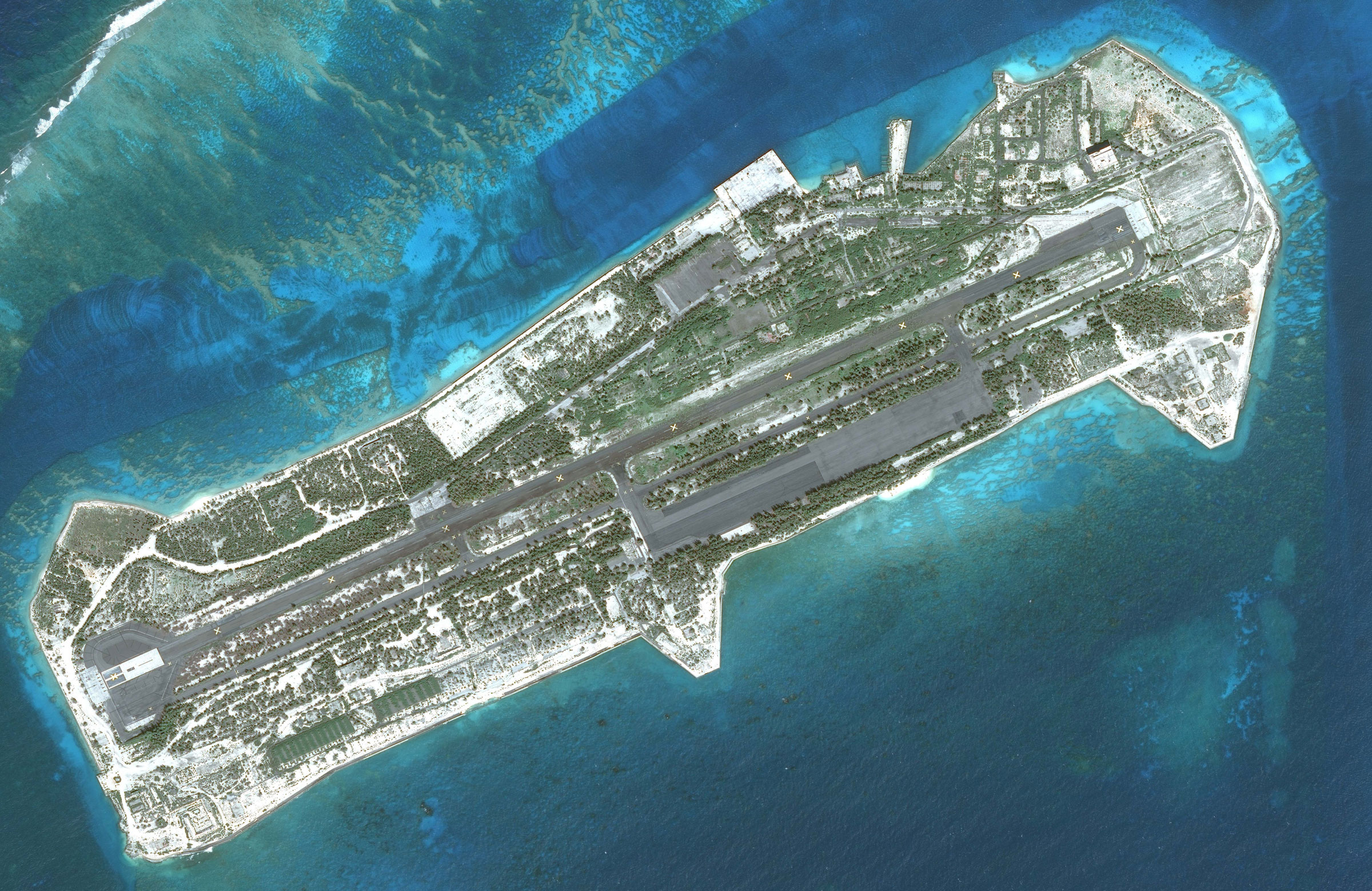Steve Rowell
Johnston Island Saturday Night
2012
Johnston Island (also referred to as Johnston Atoll) is a decommissioned US Naval base 800 miles west of Hawaii. Between 1958–1963, it was the site of numerous high altitude nuclear test launches, including the Starfish Prime test as part of OPERATION FISHBOWL, in which a 1.4 Megaton blast irradiated the Van Allen Belt to the extent that it degraded seven orbital satellites beyond repair. Later failed tests, including Bluegill Prime, scattered weapons-grade plutonium across the island and across the open ocean. Between 1985 and 2000, stockpiled VX nerve gas, Sarin, and Agent Orange were incinerated on the island at the U.S. Army's first chemical weapons disposal facility. Johnston Atoll is now, once again, a national wildlife refuge, 86 years after it was established as such by President Coolidge.
The video includes historic photos of disused launch gantries, incinerator demolition / removal, and final closure of the island as a military reservation. Also featured are nostalgic images of bbq parties, scuba diving, tiki bars, palm trees, shark feeding, and members of the military hanging out in shorts and Hawaiian shirts, drinking cans of beer, all set to the tune of "J.I. Saturday Night" a Jimmy Buffet inspired tune by singer/songwriter Larry La Riviere who spent 11 years on Johnston Island, charged with dismantling "Weapons of Mass Destruction" (another song of Larry's). Completing the piece are two short extracts from silent footage shot in 1924 by Smithsonian ornithologists, featuring two birds that are now extinct. Development in the post-WWII years introduced non-native species to the island that, along with the chemical and nuclear experiments on the Island and in the region, dealt the final blow to many birds that were struggling to survive in an already inhospitable place.
Questions abound for places like Johnston Island. These once remote, pristine places which have been transformed geologically, chemically, and radioactively built and blasted beyond recognition, up-ended and sealed. Can such profoundly altered landscapes ever be natural again? In this case, the U.S. Department of Defense has tried to undo the past 60 years, at least on the surface. Re-natured or re-wilded places such as Johnston Island will, for the foreseeable future, bear signature marks of their land use. Perhaps the most honest way to preserve sites such as this is to leave reminders of what occurred. A full erasure of the defense-related history of Johnston Island would be destructive and only serve to conceal the past. Extinction, decay, destruction, and remediation (natural or otherwise) are temporal, entropic events and should be realized and memorialized, made tangible and appreciable, by the site itself. Extreme interventions on the natural landscape, such as what occurred here on this remote Pacific atoll, should never be obscured, lest they be forgotten. Johnston Island is another exemplary ruin of the 20th century.
This video premiered at the event: Landscape is a Weapon: An Incendiary Traces at the Velaslavasay Panorama, Los Angeles in March 2012 and was featured on KCET's Artbound.
Johnston Island Saturday Night is a video piece assembled and appropriated from 4 sources:
- A slideshow found online featuring photographs and amateur video footage taken by veterans during missions from the 1960s-2000s.
- Archival, declassified US military footage edited by National Public Radio to accompany a radio story about atmospheric nuclear tests.
- Archival silent footage from the 1924 Tanager Expedition, a joint survey by the Smithsonian Institution under the auspices of the US Navy.
- A song by a veteran who served on Johnston Island.

“Johnston Atoll’s military history began before World War II and continued until the island was decommissioned in 2004. At one time over 1,200 military and military contractor personnel lived at the Johnston Atoll. In the mid-1990s Johnston Island was the location of the Johnston Atoll Chemical Agent Disposal System (JACADS) which was used for destruction of chemical agents. The island has had two RCRA permits to store or treat hazardous waste, the JACADS facility permit and the Johnston Atoll permit. The hazardous waste management units associated with both permits have been closed and there are no hazardous waste management units operating at the Atoll at this time. There are Solid Waste Management Units and Areas of Concern left on the island that require maintenance and monitoring so the area is under Corrective Action. The facility and runway on Johnston Island were closed in June 2004 under the Johnston Atoll permit and Johnston Atoll is still under Air Force ownership and control.” Source: US EPA